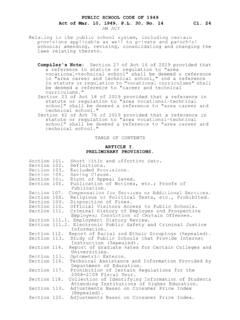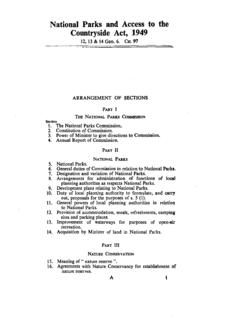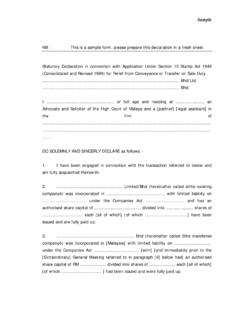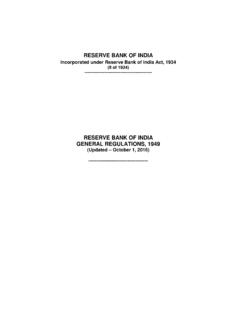Transcription of Project Risk Management Using the Project Risk FMEA
1 28 Engineering Management Journal Vol. 16 No. 4 December 2004 Engineering Management Journal Vol. 16 No. 4 December 2004 Engineering Management JournalProject Risk Management Using the Project Risk FMEAT homas A. Carbone, Fairchild Semiconductor CorporationDonald D. Tippett,The University of Alabama in Huntsvillenumerous types of development projects, Adams reported similar numbers, where only about one-fourth of all projects entering development become a market success (2004). Datta and Mukerjee (2001) stated that successful Project completion depends to a great extent on the early identifi cation of immediate risks . Jiang et al.
2 (2002), Using factor analysis, confi rmed their hypothesis that risks adversely impact Project success for software development. Certainly there are a number of factors that determine whether a Project will be a success, but it seems likely that failing to perform adequate risk Management will increase the possibility of failure. The old axiom, failing to plan is planning to fail, appears to apply to risks . Having an effective method to plan for and manage Project risks that is easy for the Project team to understand, use, and apply is critical. As projects increase in complexity and size, taking a multidisciplinary approach to Project Management requires giving proper attention to risk Management .
3 This article proposes a simple risk Management tool that has been shown to be benefi cial to managing Project risks and improving Project FMEA as a Project Risk Management ToolRisk analysis techniques include expert interviews, expected monetary value, and response matrices, along with more advanced risk techniques such as the Monte-Carlo method. Pritchard (2001) and Raz and Michael (1999) provide comprehensive information about and references to risk analysis techniques for various applications and requirements. One risk Management technique multiplies probability of the risk occurring with the expected impact of the risk. This leads to an evaluation for each risk. In this work, the method of Using the risk probability multiplied by the risk impact value is expanded by also multiplying a detection value for each risk.
4 Multiplying three values of likelihood of occurrence (or probability), severity (or impact), and detection is the familiar About the AuthorsThomas A. Carbone is manager of the global operations Project offi ce at Fairchild Semiconductor in South Portland, ME. He received a BSEE from the Rochester Institute of Technology and an MS in engineering Management from the University of Massachusetts at Amherst. He is pursuing a PhD in engineering Management from the University of Alabama in Huntsville. His research interests are in the areas of product development, manager development, risk Management , and integrated product teams. Donald D. Tippett holds an MS and PhD in industrial and systems engineering from Texas A&M University, and a BS in mechanical engineering from the Naval Academy.
5 He is a member of the engineering Management faculty at the University of Alabama in Huntsville. His previous experience includes ten years active duty as a carrier-based naval aviator with the Navy. Contact: Thomas A. Carbone, Fairchild Semiconductor, 82 Running Hill Rd., MS35-2H, South Portland, ME 04106; Management tool manuscript. Finalist in the Merritt Williamson Best Conference Paper award at ASEM : Identifying and mitigating Project risks are crucial steps in managing successful projects. This article proposes the extension of the Failure Mode and Effects Analysis (FMEA) format to quantify and analyze Project risks . The new technique is labeled the Project risk FMEA (RFMEA).
6 The RFMEA is a modifi cation of the well-known process, product, and service FMEA technique. In order to use the FMEA format for projects, the detection value of the standard FMEA is modifi ed slightly for use in the Project environment. The new approach is illustrated in a case study from the electronics industry. By adding the detection value to the risk quantifi cation process, another measure beyond the typical risk score is made available to the Project team. The benefi ts of the RFMEA include an increased focus on the most imminent risks , prioritizing risk contingency planning, improved team participation in the risk Management process, and development of improved risk controls.
7 Keywords: Risk Management , Risk Matrix, Risk Analysis, Project ManagementEMJ Focus Areas: Program & Project ManagementToday, effectively managing risk is an essential element of successful Project Management . Proper risk Management can assist the Project manager to mitigate against both known and unanticipated risks on projects of all kinds. Failure to perform effective risk Management can cause projects to exceed budget, fall behind schedule, miss critical performance targets, or exhibit any combination of these troubles. In 1999 the Standish Group reported that only 26% of software projects were successful. In other studies across Engineering Management Journal Vol.
8 16 No. 4 December 2004 Engineering Management Journal Vol. 16 No. 4 December 2004 Engineering Management Journal29format of the failure mode and effects analysis (FMEA) used for process, design, and service planning. The FMEA technique dates back to the United States military procedure MIL-P-1629 (1949). Bongiorno (2001) provides an overview of a design FMEA (DFMEA), as well as the basic mechanics of the FMEA technique. Currently, the technique is an integral part of ISO-9000 and QS-9000 quality certifi cation levels. It is used within the comprehensive framework of product and process development with such tools as FTA, APQP, QFD, DOE, SPC, 8-D, and the like ( , 2003).
9 The FMEA method is a natural addition to the Project risk Management process due to its ease of use, familiar format, and comprehensive structure. In the method of applying the FMEA format to Project risks , it is defi ned here as the Project risk FMEA or RFMEA. The RFMEA technique is not just another way of analyzing Project risks but helps focus the risk contingency planning required early in the Project on critical risks . Pritchard (2000) fi rst identifi ed the FMEA technique as an advanced format capable of capturing Project risks . The use of the FMEA technique is developed here with terminology, along with a detailed methodology. In addition, the method of Using the RFMEA with simple graphical analysis techniques is introduced for risk priority planning.
10 First, the most common risk terminology in the literature is reviewed with the reader. Second, defi nitions for Using the RFMEA are provided. The method of creating the RFMEA is then explained. The benefi ts of the RFMEA are discussed to help the engineering manager, Project manager, and team members realize the importance of this method. A case study of the RFMEA in use is shown as an example for the reader. The conclusion highlights the importance of such a method to the engineering Management TerminologyWhile the literature on risk Management is plentiful, the defi nitions and meanings of a few key similar terms within the fi eld are inconsistent.







